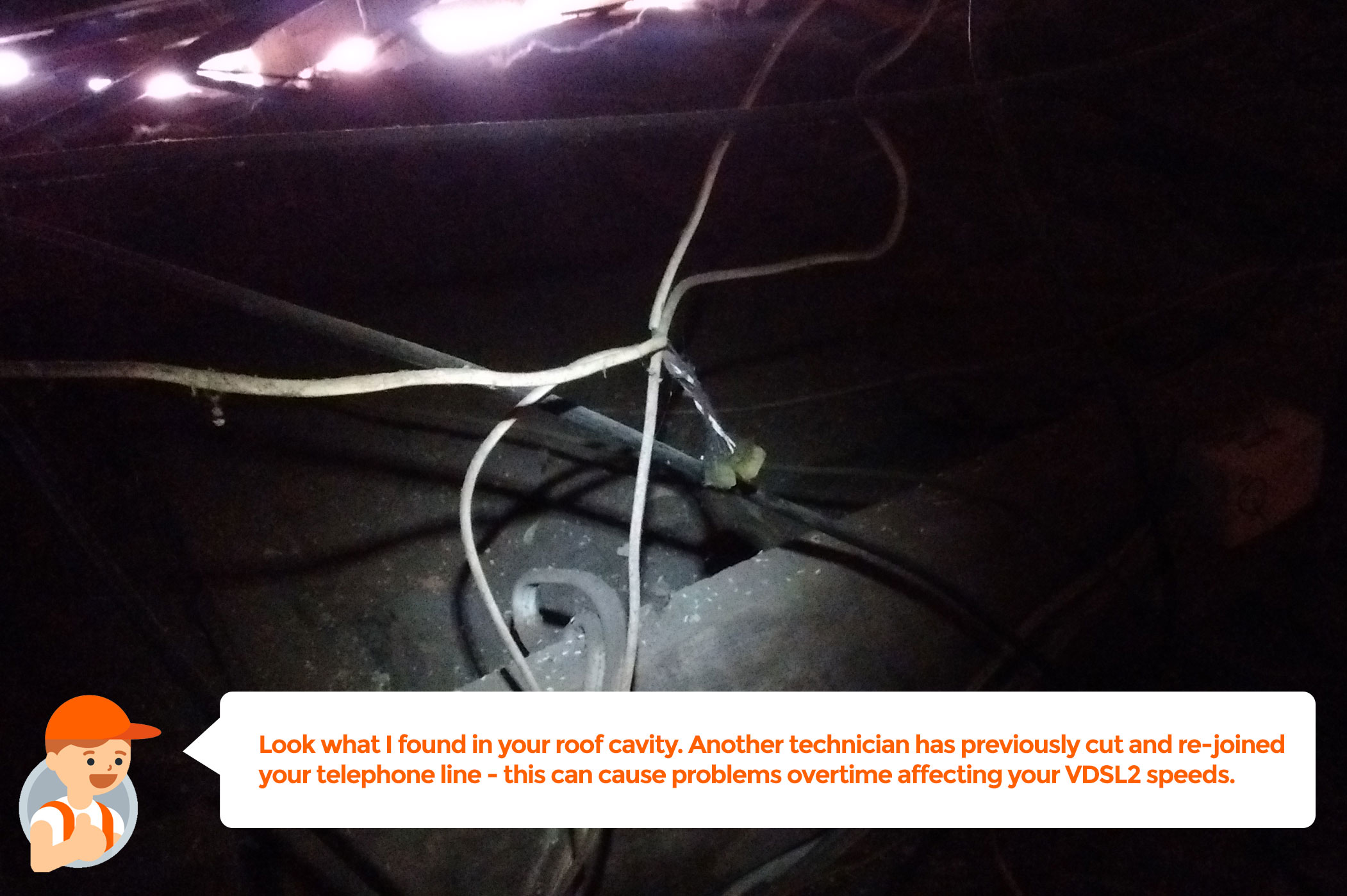VDSL2 Slow? 2 Major Issues Affecting Speeds
Posted at 08/01/2017 03:39pm
In case you didn’t know, VDSL NBN (FTTB or FTTN) connection types utilise your existing copper phone wiring within your premises. If you’re lucky enough to be in a newer type house or apartment, this post won’t need your unduly attention. However still some helpful information to keep in mind.
Two major encumbrances causing slow VDSL2 speeds will be:-
1. Distance from the Node
2. Quality of copper cabling
Now, with respect to point one, you cannot control the distance your house is away from the VDSL2 node. Unless of course, you move closer, which I’m sure isn’t going to happen.
However, with point two. Yes, you can control the quality of the copper phone cabling from the VDSL2 Network boundary point to your modem wall plate. Which is generally from an MDF if you’re in an apartment, or the little grey Telstra box should you be located within a house.

As you can see from the image above, over the many of years, either you or previous tenants and owners have had work, renovations and telephone technicians who’ve visited and potentially cut and re-joined your home’s cabling.
Of course you won’t see these joins, as they’re generally in roof cavities, under floors and all the hard to look places. Literally the other day, we were performing VDSL2 line repairs for a customer in Sydney, and they had not 1, but 4 separate joins in 1 piece of cable, which overtime attracts rats, dust and suspect to weather conditions, ultimately affecting quality and VDSL2 service speeds.
After investigation, we offered our professional opinion advising the customer to completely install a new line from outside to inside their premises.
What else can affect VDSL2 NBN speeds?
Speeds can be affected by old back-to-base alarms, poor wiring and termination, medi-alert medical devices, fax machines and too many faulty wall sockets.
How do you recommend fixing and boosting your VDSL2 speeds?
Simply put, the most successful method we’ve had enhancing customers VDSL2 slow speeds are rewiring the house, disconnecting old wall sockets that aren’t being used, performing an inspection for any back-to-base alarms or central filters and minimizing the amount of connections from the street into your first wall socket.
Basically by just having 1 wall socket ONLY connected to your VDSL2 modem from your ISP network, then all other connections throughout your premises should be either wifi, or hard-wired through the Ethernet ports on the modem,will yield optimal results.
Many customers see increase in stability and with some luck their speeds increase, giving them peace of mind their internal network is in tip-top shape.
I do hope this information has been informative and you have a better understanding on what actions to take to better enhance your VDSL2 NBN (FTTN/FTTB) connection.



